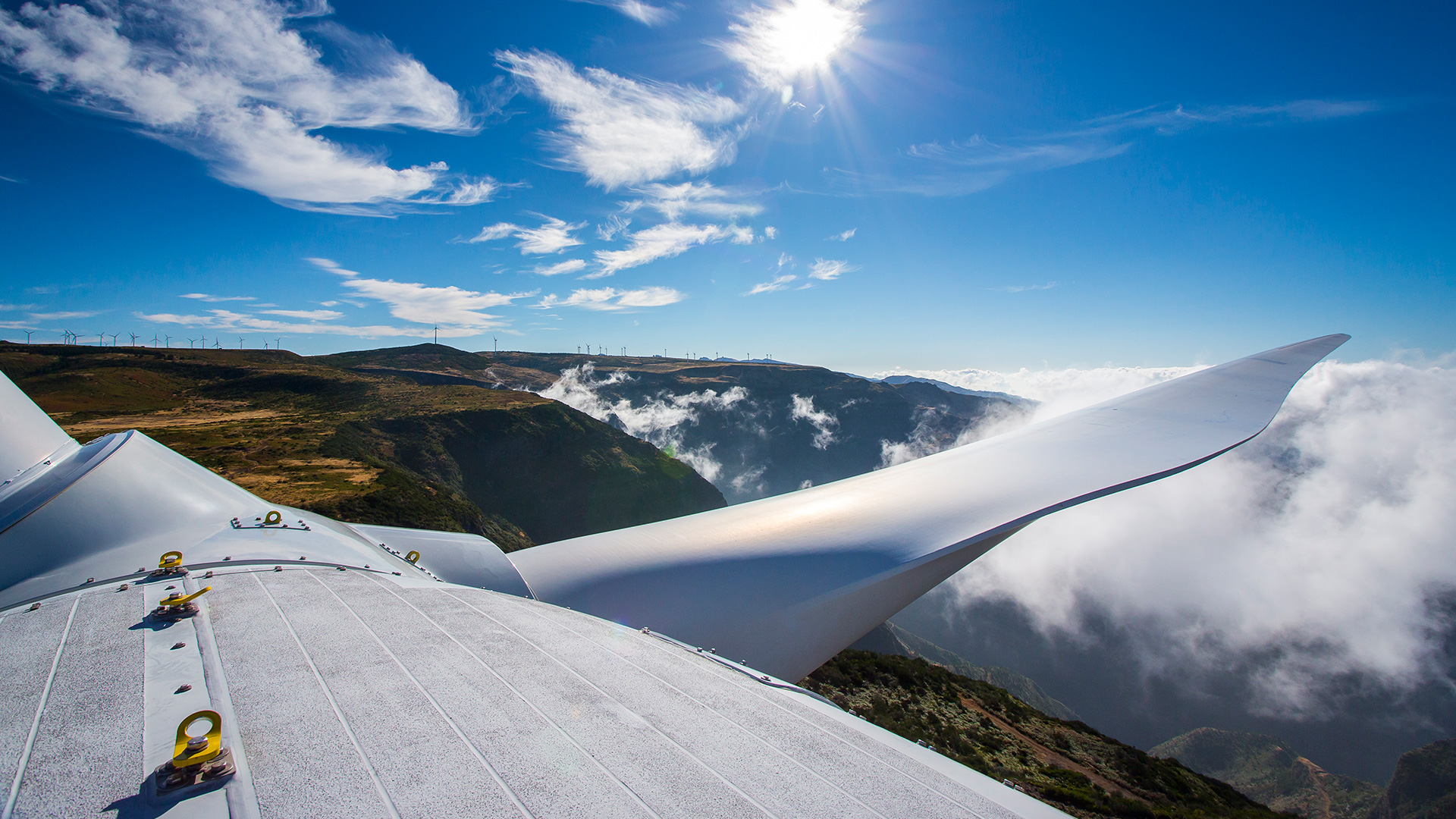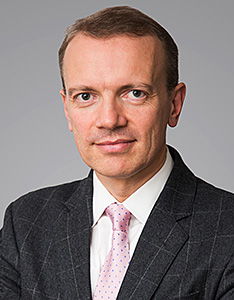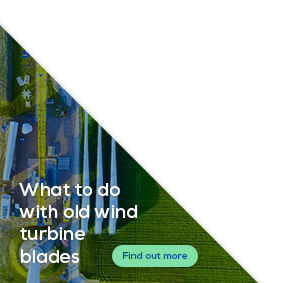Brussels Brief
Brussels Brief July 2016

1 July 2016

Giles Dickson
What does Brexit mean for the wind industry?
CEO foreword
The full impact and implications of the UK referendum, and what it means for the wind industry short and long term, are impossible to assess properly at this stage. But there are some points we can make with a degree of clarity today – and I wanted to share these with you.
First, the UK wind market retains a number of strong fundamentals. The UK has lower reserve margins than most other countries in Europe so it needs new generation capacity. The current government, which is no great friend of renewables, has committed to 1GW a year of new offshore wind up to 2030.
However, the UK market will get harder now. Slower GDP growth in the UK will reduce electricity demand. And the prospect of Brexit and the political and policy uncertainty it brings, not least during what may be 2-3+ years of negotiating a new UK/EU relationship, will cast a shadow over UK investments. This is likely to raise the cost of capital and impact on project costs. The UK Parliament has said a +2% risk premium would increase the cost of financing offshore wind by £3bn a year.
Brexit will impact on policy. So does the simple fact that the UK will get a new Government in September. As now it’ll be a single-party Conservative Government, and the chances are it’ll stick around until 2020.
What can we expect from the new Government? The current UK Energy Minister has said (post referendum) that the UK will continue to invest in renewables and nuclear. The new Government will probably want to continue supporting offshore instead of onshore wind. They will be ambitious on climate change: the Government last week committed to a 57% emission reduction by 2032 (on 1990 levels). And they’ll probably stick with CO2 pricing whether or not they’re in the EU ETS.
How far they’ll apply EU energy policies is unclear at this stage. But don’t assume they’ll do everything independently of the EU. UK wholesale power prices are twice as high as most places in Europe, and they see the single EU electricity market, and expanded interconnectors, as a way of reducing them. Their reserve margins will remain tight for some time, so they’ll remain a net importer of electricity. Overall, Europe will matter to them on energy.
What about the impact of Brexit on the rest of Europe ? We judge it will shift the balance of opinion on EU policy-making in a negative direction overall. Sure, the UK didn’t like Brussels telling them what to do on renewables, which held us back on the Renewables Directive. But we will lose an ally on climate change, CO2 pricing and electricity markets – and on the Single Market, trade policy and financial services where their pragmatic, business-oriented approach usually worked in our favour. More broadly, the relative weight in the EU of Central and Eastern European countries will increase with Brexit. It’ll be harder for Brussels to do things without having a good number of these countries on board.
So those are points we can make with a degree of confidence today. Of course it leaves many questions unanswered – and it’ll be months if not years until the outlook is really clear.
But can I assure you of one thing: WindEurope will remain fully committed to and active in the UK. RenewableUK will remain a key partner – we are looking forward to our joint Offshore Event in London in June 2017. Above all, the UK will remain a key wind market for our Association and for Europe.
Policy

Full steam ahead for offshore wind
By Andrew Ho
Two important announcements were made in June that pushes offshore wind into the forefront of policy makers’ minds as they ponder how to continue the energy transition beyond 2020. At the EU energy council meeting on 6 June, nine member states signed a North Seas declaration that sets out the path for offshore wind as a key tool for energy cooperation. At the same time, chief executives and senior figures from industry signed a joint statement, agreeing that costs in offshore wind could be below €80/MWh with the right volume and visibility on future projects.
As reported in the May edition of the Brussels Brief, WindEurope’s Working Group on Offshore Wind has provided valuable input into the actions that regulators can take as first steps in cooperation and lowering the cost of energy. It is a great testament to the hard work of the members that so much of what was put forward by the Working Group now features in the working programme that the declaration has now established.
Timed with the signing of the declaration, the cost reduction statement signed by 11 offshore wind leaders sent a strong signal to policy makers that industry is committed to securing its future beyond commitments made to 2020. The statement declared that with an installation rate of at least 4GW/year, and a supportive regulatory framework, cost levels below €80/MWh can be met for projects reaching final investment decision in 2025, including the cost of connecting to the grid. This ambitious target sets out what can be accomplished with the right volumes and clarity, something that is currently lacking in the years after 2020.
WindEurope’s advocacy work will continue to build on the momentum of the two announcements. With the declaration signed, it will be important that the work programme is implemented fully and effectively. We continue to push for industry representation at the highest levels of the working groups that the declaration is now forming, as well as advancing our positions on post-2020 governance.
Membership

WindEurope 2016 mid-year offshore wind statistics webinar
The webinar introduces the WindEurope offshore wind industry statistics for the first half of 2016.
This 45-minute session headed by the Business Intelligence Unit will give you privileged information on the progress of the industry during the first 6 months of 2016, detailing new added capacity, market shares, and providing financing highlights.
Registration for this webinar is open now.
Member successes

Energy Port Oostende and REBO, home basis for the offshore wind installation activities in the North Sea
REBO terminal , the heart of Energy Port Oostende
Since a few months, the REBO terminal at the port of Oostende is in full operation: it has become the heart of the installation of the Nobelwind offshore wind park, preparing the different components of the windmills for their life at sea. This project is managed by Parkwind and realized by the company Jan De Nul, who has launched its installation vessel “Vole au Vent” for this operation. With the handling of the very heavy foundations and transition pieces, Energy Port Oostende proves to be an efficient marshalling port for the construction of wind parks at sea.
Adequate infrastructure for the construction of offshore wind parks
The REBO-terminal has been adapted for the efficient installation of the offshore wind projects: the terminal offers the operators 800 meters of quays, 15 hectares of covered terminal surface with a loading-capacity of 20 tons/m², and jack-up facilities for the installation vessels. The REBO-terminal offers a direct access to the open sea and the port of Oostende gives priority to the operations of the offshore vessels.
Next to the REBO-terminal, the port of Oostende takes care of the development of the necessary infrastructure, which is demanded by the suppliers to the offshore wind industry and for the companies, specializing in the maintenance. Even high-value installations for professional offshore training is operational at the port: Falck Safety Services have built their most modern offshore training-center at the port of Oostende.
Experience and know-how
Nobelwind is not the first project that has been realized by both the REBO-terminal and the Energy Port Oostende. Since 2008, the port has chosen the strategic option to become a key player in the offshore wind sector. It all started with the construction of the first 6 concrete foundations (2700 tons each) that have been built and efficiently handled at the port in order to launch the first Belgian offshore wind park, C-power.
What brings the future
After the finalization of the Nobelwind project, 4 of the 9 Belgian offshore wind parks are built, representing an installed capacity of 877 MW. An overall capacity of 2251 MW is planned to be installed. Therefore, Energy Port Oostende , in close cooperation with REBO, will continue to valorize its experience as a key marshalling port for all kind of (heavy) components for the installation and maintenance of offshore wind parks.
More information:
Emmanuel Timmermans, BDM REBO: [email protected]
Wim Stubbe, BDM AGHO: [email protected]
Envision Energy – Smart Energy Strategies for Europe

Two important milestones in Envision’s entry to the European wind power market took place in the first half of 2016. After opening its new international operational head office in Europe recently, it has acquired the Norway-based cutting edge digital BazeField technology, in a partnership that will drive both companies forward into the digital energy revolution, the company said in a press release.
Envision’s commitment to fostering collaboration in Europe is clearly visible. Since 2009 when it opened its R&D centre in Denmark, the company has left an investment footprint every year in Europe. The newly Centre of Excellence (CoE) located in Hamburg, will serve its international clients to provide the best quality service solutions to global projects.
Envision believes that, as other regions pursue their own energy transitions, Europe stands to increasingly benefit from a world of investment and innovation from the largest and fastest growing renewables markets around the world.
Although there have been significant improvements to wind power production over the last few decades, the digital energy technology market is still at an early stage of development. “It is highly fragmented, geographically diverse and rapidly evolving” said Envision’s executive director, Felix Zhang.
At this stage of the market’s development, innovation and growth requires more partnerships and greater cooperation – not just across Europe but globally.
Zhang pointed out that the world is rapidly moving to a future energy system that is completely different from today’s. “This energy future will rely on society and business being able to run an energy system in which digitalisation means greater control and improved efficiency at every juncture,” Zhang said.
Envision Energy – Quick Facts
- Top 10 ranked wind turbine manufacturer with over 7.5GW smart turbines in operation globally
- Largest renewable energy management services company with >50GW assets worldwide
- More than 1000 renewable energy professionals across Europe, North and South America, Australia and Asia
- For more information, please visit www.envision-energy.com
EU-funded projects

ETIPWind workshop, 3 June: Where should R&I funding go
€2.38 billion is available for the H2020 Energy Work Programme 2018 – 2020, this means 50% of the programme budget for the period. The EU has raised its research and innovation (R&I) funds significantly to accomplish ambitious goals. The question remains where this money should go. On 3 June, ETIPWind hosted a first workshop where Europe’s wind energy community started defining the Strategic Research Agenda 2016.
In order to define a basis for analysis 2,700 conference papers were analysed, 230 participants completed an online survey conducted over the course of May 2016 and ultimately, 25 experts scrutinised these results to facilitate a well-informed exchange at the workshop between academia, industry and the European Commission.
During the workshop more than 50 participants from over 15 countries identified four key areas:
- Grid systems, infrastructure and integration
- Operation and maintenance
- Industrialisation
- Offshore balance of plant
The next public workshop takes place on 27 September, where ETIPWind will present the agreed Strategic Research Agenda 2016 to the European institutions.
ETIPWind acts as the hub that brings the European wind energy community together because such a collaboration helps the industry reduce LCoE and Europe become world champion in renewables.
Explore to lead: etipwind.eu
Greater acceptance for wind farms through innovative financing and local communities’ empowerment
On June 15 2016 within EUSEW 2016 WindEurope together with Greenpeace, REScoop.eu, and the EU Commission joined forces to highlight the role of energy citizens in the Energy Union. The event “Empowering Europe – The role of energy citizens, local communities and innovative financing” highlighted the role of innovative financing in increasing social acceptance for renewables and the importance of empowering local communities for greater energy democracy. This event is part of a series of events organised within the framework of the WISE Power project, an EU funded project which aims at supporting WindEurope’s strategy to deliver 2020 targets and ensure a greater public acceptance and greater bankability to wind farm projects.
This event is directly linked to the Hamburg WindEurope Summit 2016 sessions taking place on 29 September 2016, particularly the Yes in my Backyard session which will present various measures to support and maximise social acceptance and respond to stakeholders’ questions. This will also be the last WISE Power project event.
For more information on the project please click here.
Electricity market design debates
The current European Target Model for electricity market design and its future developments have been discussed in Brussels on Friday 17 June. The half-day event organized by the Market4RES project and supported by the European Sustainable Energy Week hosted the panel debate “Guidelines for new market design options” where speakers from the European Commission, ENTSO-e, EURELECTRIC, the German Federal Ministry of Economic Affairs and Energy, University of Comillas and WindEurope expressed their view on the topic. The debate was moderated by SolarPower Europe.
The aim of the workshop was to present and discuss with the audience the preliminary project findings. Thanks to the input received over the months from several stakeholders, these findings will be finalized over the summer and presented at the WindEurope Summit in Hamburg during the session “Making electricity markets fit for wind” on Thursday 29 September from 9:00 – 10:30.
The presentations from the past events are available here. For more information on the project outcome and next activities, please visit www.market4RES.eu or email Diletta Zeni.
Assessing environmental, societal and economic impacts of the offshore wind lifecycle and supply chain
The analysis of possible environmental and socio-economic impacts on local environment and communities generated by the application of “lean” principles in the offshore wind farm lifecycle and supply chain: this will be the core theme of discussion of “Offshore wind farm lifecycle and supply chain: assessing local impacts”, held on Wednesday 28th September 2016 at the WindEurope Summit 2016.
The role ports play in a local community and the challenges and rewards of port insertion in a lean offshore wind supply chain will be shown, with a highlight on the case study “Port of Oostende”. Finally, the session will present the progress of the more holistic economic model the study will convey to. This aims to assess both the possible costs savings deriving from the novel approach applied and the industry uptake of the innovations generated.
This study is in the framework of the EU-funded LEANWIND project, targeted around transport and logistics elements of the offshore wind industry. LEANWIND is intended to reduce the Levelised Cost of Energy (LCOE) via the application of lean principles to key aspects of an offshore wind farm and supply chain.
On its second year of implementation, the project has already demonstrated that cost savings and efficiencies can be achieved as well as contributing to the development of niche markets within the shipping and offshore wind industries. LEANWIND innovations, up to 27 in total, will contribute to the cost reduction target of €80MWh by 2025 that was recently announced by 11 leading energy companies. The project very much welcomes this signal of a real appetite for the innovations that are being developed in its framework.
For more information on the projects developments, please visit www.leanwind.eu.
Upcoming Events
WindEnergy Hamburg 2016 – The world’s leading expo for wind energy
More than 1,200 exhibitors from over 30 countries are expected at WindEnergy Hamburg 2016. All wind experts will be there, both onshore and offshore professionals. From well-known industry giants right through to highly specialised small and medium-sized enterprises. Take a look at the preliminary list of exhibitors and schedule in sufficient time for your visit!
While the leading international expo runs in nine exhibition halls on the Hamburg fairground, the leading WindEurope Summit will be taking place in the neighbouring Congress Center Hamburg.
Note the most important date on calendar in 2016 is the world’s leading gathering for wind energy in Hamburg from 27 – 30 September 2016, so be there to join professionals and decision-makers from all over the world!
For more information visit: windenergyhamburg.com/en
Note: WindEnergy Hamburg online ticket shop opens in July.
Don’t miss these upcoming networking and learning opportunities
- Webinar: WindEurope 2016 mid-year offshore wind statistics
- WindEurope Summit 2016 27 – 29 September 2016, Hamburg, Germany
Registration is now open for WindEurope Summit 2016. Details of many summit sessions are already available with more information being added regularly. Exhibitors at WindEnergy Hamburg receive a 20% discount on Summit passes and members of WindEurope receive an additional 30% discount. - Wind Turbine Sound 2016 17 – 18 November 2016, Gdansk, Poland
- Offshore Wind Energy 2017 06 – 08 June 2017, London, United Kingdom
- WindEurope Conference & Exhibition 2017 28 – 30 November 2017, Amsterdam, Netherlands

